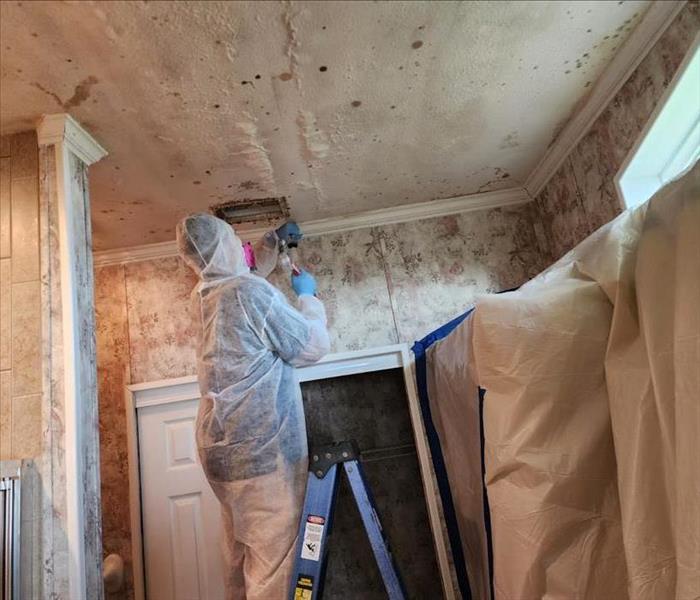Black Mold: Myths vs. Facts
3/13/2024 (Permalink)
 In this blog, we will explore common myths surrounding black mold and provide factual information to dispel any misconceptions.
In this blog, we will explore common myths surrounding black mold and provide factual information to dispel any misconceptions.
Black mold, also known as Stachybotrys chartarum, is a type of mold that has gained attention and generated various myths over the years. It is important to separate fact from fiction when it comes to this form of mold. In this blog, we will explore common myths surrounding black mold and provide factual information to dispel any misconceptions.
Myth 1: All Black Mold is Toxic
Not all black molds are inherently toxic. The term "black mold" is often used to refer to Stachybotrys chartarum specifically. While this particular mold can produce mycotoxins, it is essential to recognize that not all black molds are toxic. The color alone is not an indicator of toxicity. Professional assessment and testing can help determine the species and potential risks associated with mold in your home.
Myth 2: Black Mold is Always Visible
Black mold can certainly be visible on surfaces, presenting as a dark black or greenish-black growth. However, it can also grow in hidden areas, such as behind walls, inside ductwork, or under carpets. Just because you do not see black mold, it does not mean you are immune from its presence and potential damage. Musty odors or unexplained health symptoms may indicate hidden mold growth.
Myth 3: Bleach Can Effectively Eliminate Black Mold
While bleach can help remove mold stains on non-porous surfaces, it is not an effective solution for eliminating black mold entirely. Bleach is mostly water, and when applied to porous materials like drywall or wood, it can actually promote mold growth by providing moisture. Moreover, bleach cannot penetrate deeply into materials, making it ineffective in addressing hidden or deeply rooted mold growth. Professional mold restoration services are recommended for effective black mold removal and remediation.
Myth 4: You Can Remove Black Mold Yourself
Small mold outbreaks on non-porous surfaces may be safely addressed by homeowners with appropriate protective gear and cleaning agents. However, black mold remediation is a complex process that may require professional assistance. Trained professionals have the expertise, experience, and specialized equipment to handle black mold effectively. They can thoroughly assess the situation, contain the affected area, safely remove mold, and address the underlying causes to prevent further growth.
Myth 5: Once Black Mold is Removed, It Will Not Return
Completely eliminating black mold requires more than just removing visible growth. It is crucial to address the underlying source of moisture to prevent its return. Without identifying and rectifying the moisture problem, black mold is likely to resurface. Professionals specializing in mold restoration services can not only remove black mold but also implement preventive measures to minimize the risk of its recurrence.
Separating myths from facts about black mold is essential for homeowners dealing with mold damage. Understanding the misconceptions surrounding black mold can help you make informed decisions and take appropriate actions to safeguard your home. While black mold can be a serious issue, it is important to consult with professionals like SERVPRO® who offer specialized mold restoration services. Their expertise and proven solutions ensure that black mold is effectively eliminated, and preventive measures are implemented to restore and protect your home.


 24/7 Emergency Service
24/7 Emergency Service